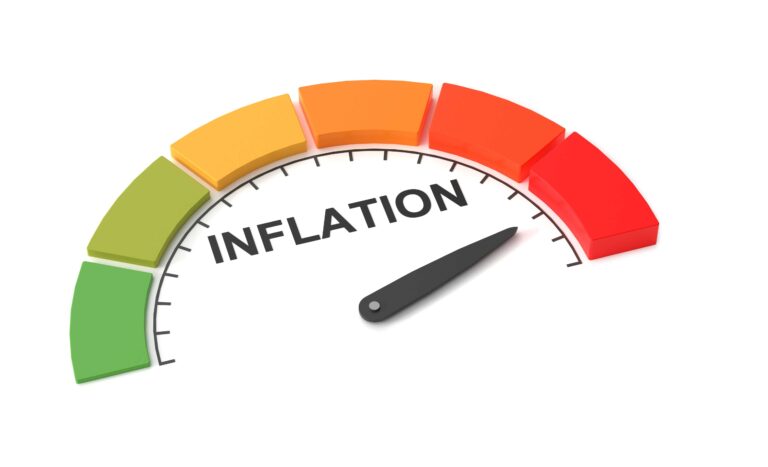
Inflation has hardly been away from news headlines over recent months. The cost of goods and services have been driven higher since late 2021, partly as a result of a hangover from the economic policies put in place to help the economy through the pandemic, and also by the Russian invasion of Ukraine.
The UK Consumer Price Index (CPI) annual rate reached a peak of 11.1% in October last year and has been steadily falling since that date (apart from an unexpected jump in February). The pace of disinflation has been slower than expected and the Bank of England have been forced to revise their year-end inflation forecast from 3.9% to 5.2%. It is worth reminding that the Bank of England CPI target is 2%, and as a result, inflation is likely to remain a focus for policy decision makers and investors for some time to come.
Whilst the concept of inflation is readily understood, we thought it would be interesting to take a look at how CPI is calculated, as the weighting in the index, and some of the component goods and services that make up the index, may raise an eyebrow or two.
The Office for National Statistics (ONS) reviews and updates the weights for its consumer price inflation “shopping basket” of goods and services each year, in line with international statistical guidance. This is an attempt to ensure that the basket is representative of the latest household expenditure patterns, and the ONS adds and subtracts items from the basket each year in an attempt to keep the basket of goods relevant. For example, in the latest review, Digital Compact Cameras, and a “non chart” CD purchased in store, were removed.
To fully reflect the wide range of goods and services that make up our economy, the basket of goods and services needs to be broad. That being said, a number of items that remain in the basket may be questionable. For example, in this digital age, it is perhaps surprising that the cost of recordable CD’s and DVD players, and the charge for DVD rental (if, indeed, this still exists?) still feature in the calculation. Likewise, another relic of the past, the cost of a directory enquiry entry, also remains. Another interesting entry in the basket are dating agency fees.
Each of the goods or services used in the calculation is assigned a weight in the index, which is adjusted regularly. The largest component is “Housing, water, electricity, gas and other fuels”, which accounts for 14.1% of the index by weight, followed by “Recreation and Culture” and “Restaurants and Hotels” which account for 13.8% each. Transport is the next largest at 13.7% by weight and perhaps surprisingly Food and Non-Alcoholic Beverages only account for 11.9% of the index.
In May 2023, the rate of CPI stood at 8.7%, with the largest contributor to this change being the cost of Food and non-alcoholic beverages, which accounted for 2.08% of the annual increase. Housing, Water and Fuel contributed 1.79% and Restaurants and Hotels contributed 1.27%. Recreation and Culture and Transport, which are both larger components of the calculation, have risen at a slower rate, contributing 0.91% and 0.16% respectively.
Clearly, what we buy does not replicate the wide ranging basket of goods in the ONS calculation. The impact that inflation has on our own financial position will depend on your spending habits, which are unique, and the composition of your household expenditure will provide an indication of your personal rate of inflation. For example, a household that spends more than average on food and heating bills will potentially have a higher personal rate of inflation than a household that spends a greater proportion of income on public transport, hobbies or home maintenance.
Whilst inflation has a variable impact depending on your personal rate of inflation, the impact can be cushioned if guaranteed income sources rise in line with inflation. For example, the triple lock guarantee on the State Retirement Pension led to a 10.1% increase in payments from April. Defined Benefit pensions in payment will have also increased, and in the case of schemes such as the NHS Pension Scheme and Teachers Pension, the pension payments increase in line with the full rate of CPI inflation. Other Defined Benefit pensions also increase in line with CPI, although for some schemes, the increase is capped at a maximum of 5% per annum. For those in retirement with an element of guaranteed income, the impact of higher inflation has, therefore, been reduced significantly. For those in employment, the ONS reported last month that average total pay increased by 7.2% in the year to April 2023, which was just behind the average rate of inflation over this period.
Those generating an income from investments, will undoubtedly have found it difficult to keep pace with the rate of inflation over the last 12 months, irrespective of how your personal basket of goods and services are made up. Cash returns have certainly improved this year, although we would not be surprised to see the Bank of England taking action to reduce rates during 2024.
Generating an income through dividend and bond interest can be a useful way of limiting the impact of higher inflation, in particular if the income is generated in a tax efficient manner, for example through an Individual Savings Account (ISA).
Speak to one of our experienced advisers here to discuss generating an income from your investment portfolio.